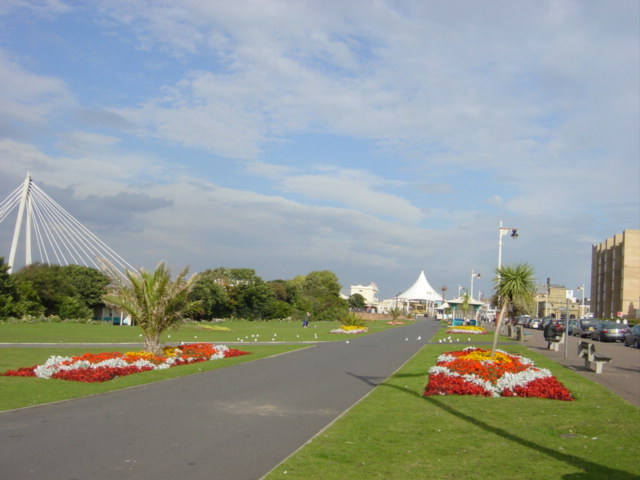Natives of Southport, which lies on the Sefton Coast of Merseyside, have the intriguing nickname Sandgrounders, but there are very strict rules as to who qualifies as a true Sandgrounder. According to legend a Sandgrounder must be "born on sand land 'betwixt Alt and Astland.'" - Alt and Astland being two specific areas of town. As with other resorts in the area, Southport's growth coincided with the industrial revolution and the attendant coastal downtime which was increasingly sought by workers in the industrial towns of the north. As early as 1792 a local man called William Sutton, aka "The Mad Duke", saw the possibilities arising from this trend and built a bathing house at South Hawes, the former name of the original town. He also built a hotel at the southern end of Southport's main shopping street, Lord Street. There is a plaque in Sutton's memory which is placed at the corner of Lord Street and Duke Street.
As well as Lord Street, Southport's attractions include the obligatory pier and tramway. For the kids there is the Pleasureland fairground and the Lakeside Miniature Railway. Older folk will enjoy strolling in its parks and gardens, particularly the Botanic Gardens in the suburb of Churchtown. Nature lovers can head to the Ainsdale Sand Dunes NNR a short distance to the south of the town, while for walkers there is the Sefton Coastal Footpath. There are numerous events throughout the year in Southport, most notably the Southport Air Show and the Southport Flower Show, as well as a food and drink festival and a jazz festival, to name just a few. There is a memorial in the town to the lifeboats, which commemorates a tragedy in 1886 involving a barque called the Mexico which sent distress signals when it got into trouble in heavy seas. A lifeboat called the Eliza Fernley was sent to help but tragically the lifeboat capsized with the loss of 14 of its 16 crew members.
For a list of events in Southport follow this link.
 | |
| South Marine Gardens, Southport - geograph.org.uk - 63857. Photo by Sue Adair, via Wikimedia Commons |








